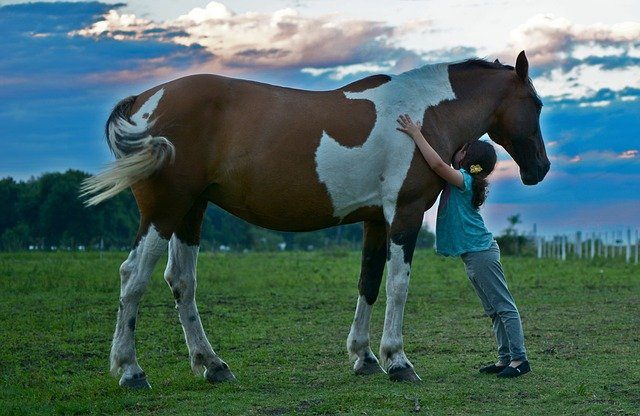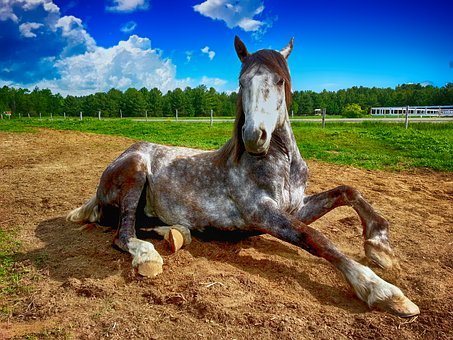While Virginia’s glorious spring weather is a joyful time for eager horse owners tired of the winter weather, there are some dangers to be aware of in this season’s rapidly-growing green grasses. A fresh spring pasture may look lovely, but it can cause issues with horses’ digestive systems and metabolism, particularly for horses with other health issues. Untreated spring pastures can be especially problematic for horses with Pituitary Pars Intermedia Disorder (PPID), those that have suffered from laminitis in the past, horses that are resistant to insulin, and even to horses who haven’t been eating grass during the winter, as it can cause them to develop laminitis or colic. Luckily there are some simple fixes to help to ensure that both your land and your horses are as healthy as possible throughout the year!
How Spring Grass is Different for Horses
Spring grasses are unlike the grasses that grow in other seasons for two reasons. First, periods of heavy spring showers cause quick growth spurts of green grasses, which makes it different than grasses that grow more slowly and regularly in other seasons. Second, the grasses that flourish in the spring have many non-structural carbohydrates (NSCs). NSCs are a particular concern in Virginia pastures that feature perennial ryegrass, orchard grass, timothy, tall fescue, and Kentucky bluegrass. NSCs can cause digestive issues with your horses’ metabolism.
Springtime Precautions to Protect Your Horses
During the spring, there are a few steps you can take to transition your horses from their winter diet to their springtime grazing diet. These simple precautions will ensure that your horses stay healthy throughout the season.
- While your horse is still getting acclimated to grass, limit their grazing time to 10 to 15 minutes per day. You can gradually increase grazing time in small increments.
- Since you’ll be limiting the amount of spring grass your horses consume, supplement their diet with hay to ensure that they’re getting all of the nutrients they need and don’t overeat while grazing.
- For horses with more severe health problems, consider using a grazing muzzle to restrict their intake of spring grasses or switching them to a dry lot temporarily to avoid laminitis.
- Monitor your horses carefully. If you notice any signs of lameness or colic, remove them from the pasture and call your veterinarian immediately.
 How to Improve Your Virginia Horse Pastures
How to Improve Your Virginia Horse Pastures
These simple solutions will help to improve your pasture so that it is both beautiful to look at and healthy for your horses, year-round:
- The first step is to improve your soil! Virginia horse pastures should have the soil tested and nutrients adjusted at least every two to three years to ensure healthy grass. After you send a sample of your soil to a testing lab, the lab will recommend the type and amount of fertilizer and lime that will maximize the growth of healthy, high-quality plants. While fertilizers can be applied to cool grasses most effectively in the fall, Virginia horse farm owners should apply nitrogen to their pastures in the early spring so long as the pasture does not contain legumes.
- If you have the space, control your horses’ grazing to better manage different pastures. You can use a temporary electric fence to control horse grazing and traffic while resting a particular pasture. Horses often return to the same areas of a pasture to graze on, so it is critical to allow each section of your pasture time to rest and regrow. You can also establish a “sacrifice area” of dry land where horses are fed hay while your pasture is resting if you have less land.
- Over-seed unproductive pasture areas. If your pasture has a cool season grass mix, it will be most effective to over-seed in the late summer or the early fall. Using a seed driller helps to ensure maximum seed to soil contact. After renovating an area of your pasture, don’t allow your horses to graze there for a full year. In the meantime, you can harvest the grasses that grow for hay that can be used in the winter and spring.
- Get your weeds under control. The first step to effective weed control is to identify exactly what weeds grow on your land so that you can choose the right herbicide and time of the year to treat them. Mowing your pastures regularly also helps to control weeds, especially when they’re mowed before they produce seeds. Investing in a high-quality seed mix upfront will also reduce the number of weed seeds in your pasture. Keep in mind that some weeds such as dandelions and cleavers are actually good for horses and don’t need to be removed.
